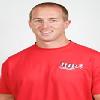Presented on US Sports Net By Yahoo Small Business!
| By: Jerzy Banas |
Business marketing is when a business markets and sells its goods and services to other businesses or organizations. These other organizations may resell these goods and services or use them in their own business to support their operations. Business marketing is often called as industrial marketing or business-to-business (B2B) marketing.
The perfect example of Business to business marketing is the automobile industry. Automobile companies buy various spare parts such as tires, batteries, electronics and door locks which are manufactured independently by other businesses and sold directly to automobile manufacturers to assemble automobiles. Even the Service industry is also engaged in large number of business to business transactions. For example Companies specializing in housekeeping provide services exclusively to other organizations, rather than individual consumers. Business-to-customer marketing is when a business markets and sells its goods and services to retail consumers for personal use. While most companies that sell directly to consumers can be referred to as B2C companies. The business-to-consumer as a business model differs significantly from the business-to-business model, which refers to transaction between two or more businesses. Business market (B2B) vs. Consumer marketing (B2C) B2C marketing differs from B2B marketing in a number of key ways. A Business market has very few customers as compared to a consumer market which has large numbers of customers. A business market usually sells a customized product where as a consumer market sells a homogenous product. A Business to business transaction is a huge value transaction as purchase quantity is very high where as business to consumer transaction is a small value transaction. Price can be negotiated in business markets where as price is usually fixed in consumer market. Business markets have lengthy and complex selling process with multiple decision makers but in consumer market buying decision are simple and are made by individuals. Keys to success in Business markets are: 1) Value creation and; Customer satisfaction Business begins with value creation. It is the prime objective of the business to create and deliver value in an efficient manner which will ultimately lead to profits. Value leads to customer satisfaction. Customer experience is an integral part of B2B marketing. The customer experience is the key brand differentiator, even more than the price and product. 2) Social media marketing Social media marketing is when a company uses social media platforms such as Facebook or Twitter to market its product or services. Social media marketing is one of the best and efficient platforms for marketers. Most social media platforms have built-in data analytics tools which enable companies to track the progress, success, and engagement of ad campaigns. Companies address a range of stakeholders through social media marketing including current and potential customers. 3) Mobile marketing Mobile marketing is a digital marketing strategy whose aim is reaching a target audience on their Smartphone, tablets, and other mobile devices through email, SMS and multimedia messages. Smartphone usage has increased multiple times during the last few years, app usage has also highly increased. Therefore, mobile marketers have increasingly taken advantage of Smartphone apps as a marketing resource. Marketers aim to optimize the visibility of an app in a store, which will maximize the number of downloads. This practice is called App Store Optimization (ASO). 4) Multimedia Content Marketing Marketing using Multimedia content attracts more customers. B2B marketers are widely adopting this trend. The primary driver is the desire to make content more engaging, compelling, and shareable than just the traditional modes. The most common forms of visual content include 360-degree videos. 5) Effective Personal selling & Executive Branding Distribution channel is the path through which the product reaches the final customer. Personal selling is the most preferred form of distribution and promotion used by B2B marketers The sellers promote the product through their attitude, appearance and specialist product knowledge. Executive Branding is when an executive showcases his professional strengths as a way to attract the customers. Executive branding is also known as reputation management. Especially in B2B environments, executive branding is now considered a necessity. Senior management must create and develop their personal brand image to attract new customers. |
| We are content publisher of stokz.com website about finance, business, stock market and financial forum |




















